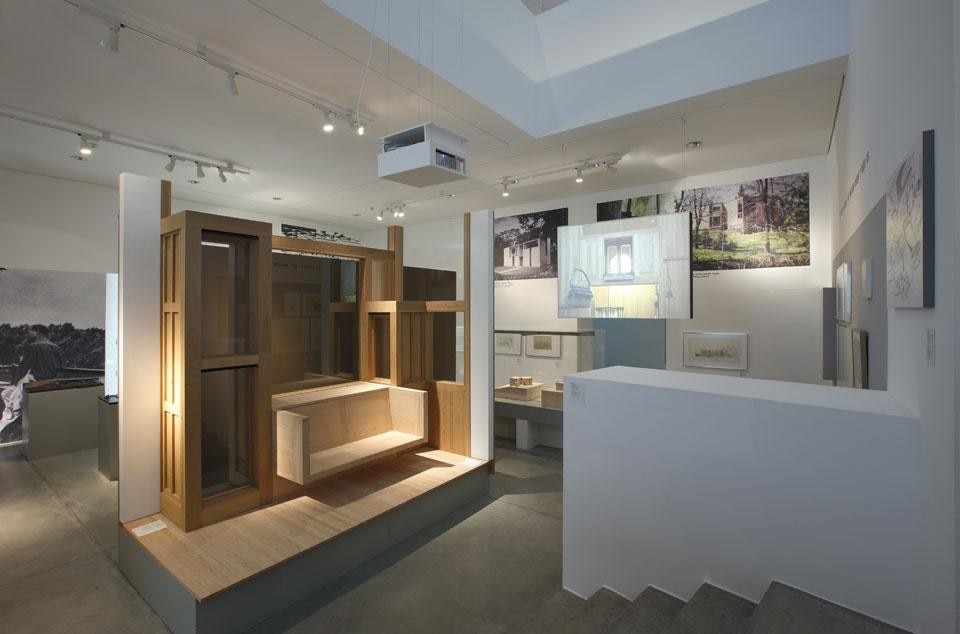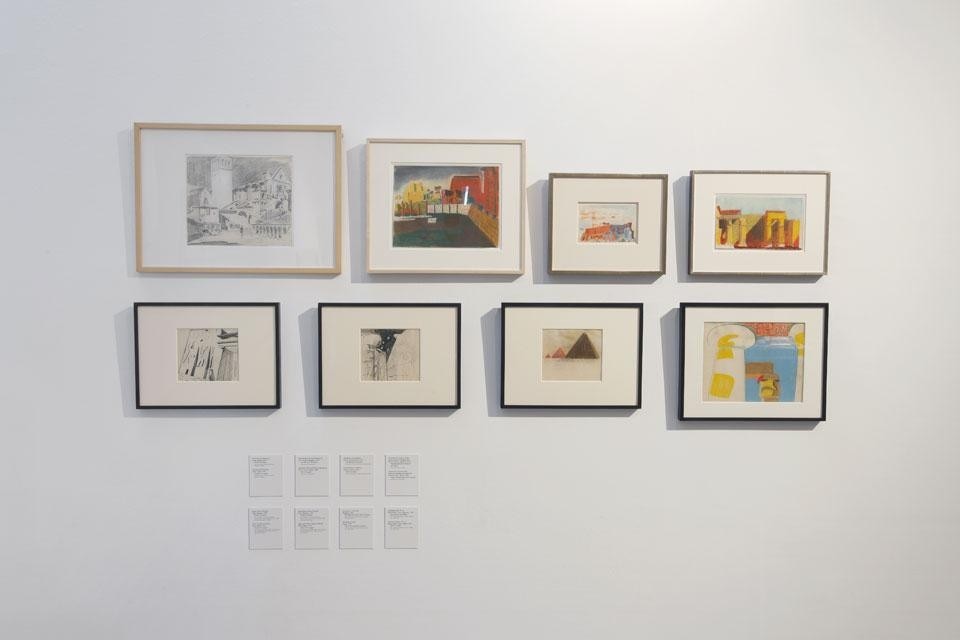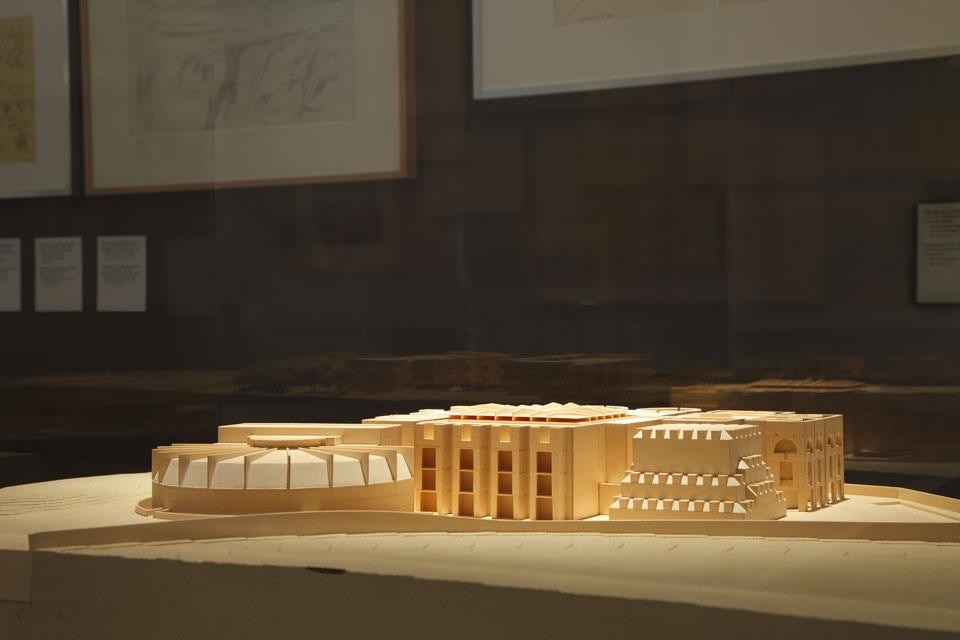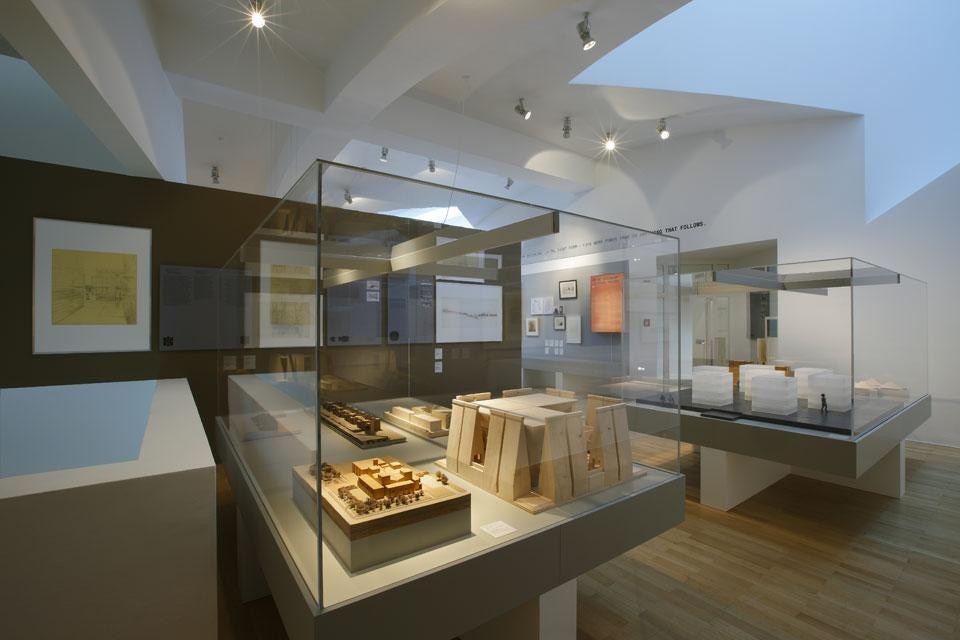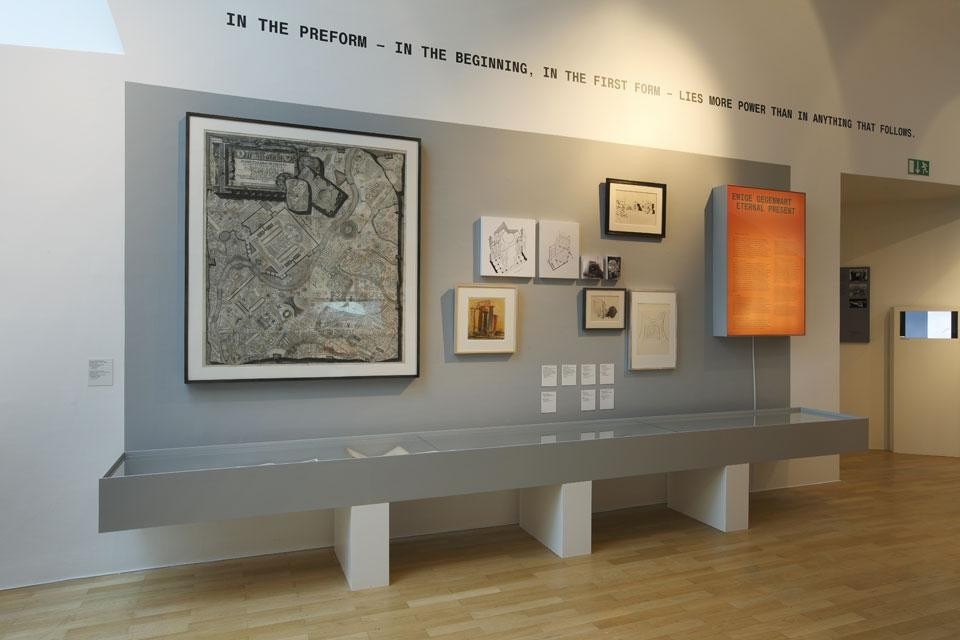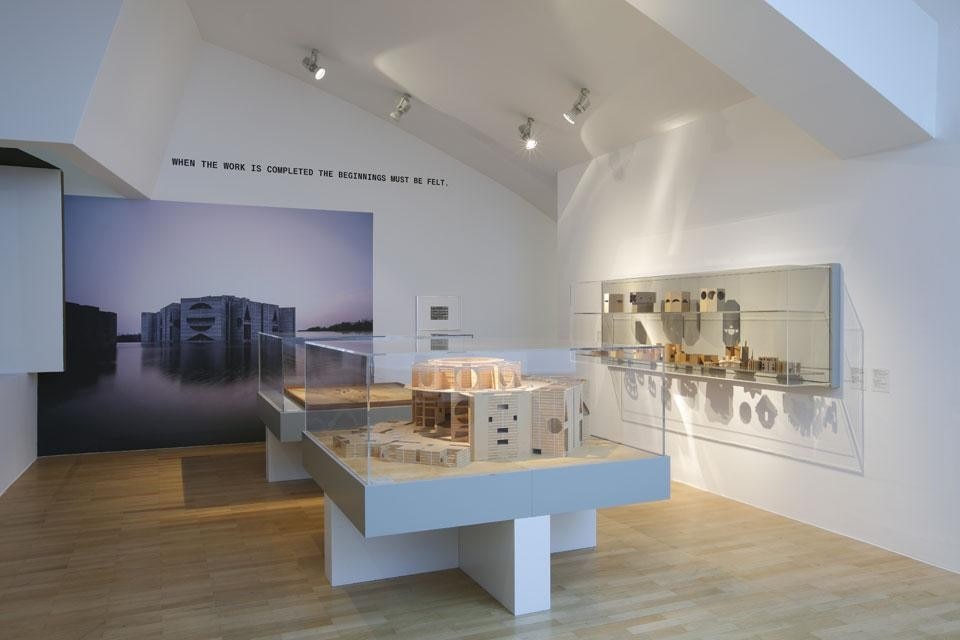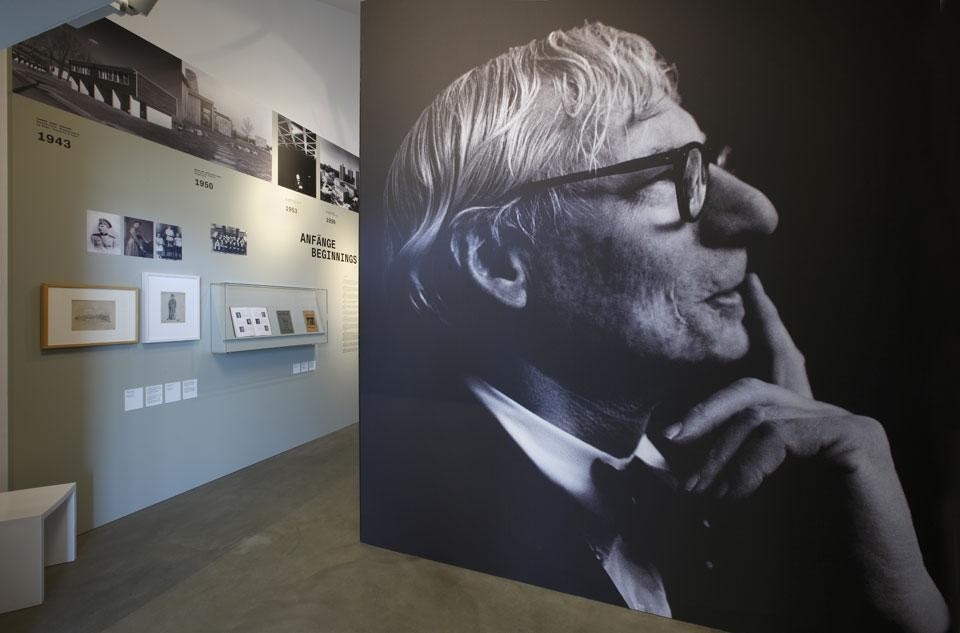Nonetheless, whoever wants to learn more about one of the 20th century's most influential architects should simply forget Gehry (which isn't easy in these rooms) and dive into this extensive and rich exhibition. The first Kahn retrospective to be seen in Europe for over 20 years arrives to the Vitra Design Museum packed with original drawings, models, photographs, magazines and videos. Despite his importance for 20th-century architecture, Kahn never gained the same popularity as Le Corbusier, Gropius or Mies van der Rohe. This might partially be due to the lack of his buildings in Europe, but perhaps also to his absence from the founding meetings of CIAM, to which he was invited only once in 1959 when the organisation was already in state of dissolution.
The main reason for this seems to reside in his architectural work, which is difficult to pigeonhole as it lies in a category of its own. Kahn was neither part of the Modern Movement nor a forerunner of post-modernism. Buildings such as the Salk Institute in La Jolla, California, or his Indian Institute of Management in Ahmedabad are works of architecture that have the perfection, clarity and timelessness of Greek temples. Kahn's virtuosity in designing spaces through light and the simplicity of his structures and concepts are legendary, but all these unique qualities can only be appreciated via physical experience.
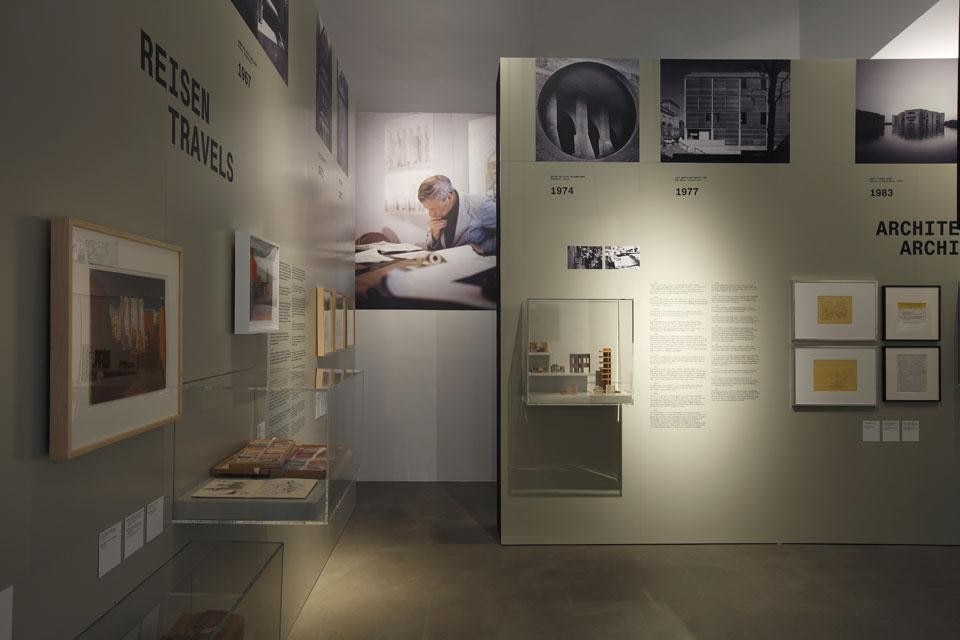
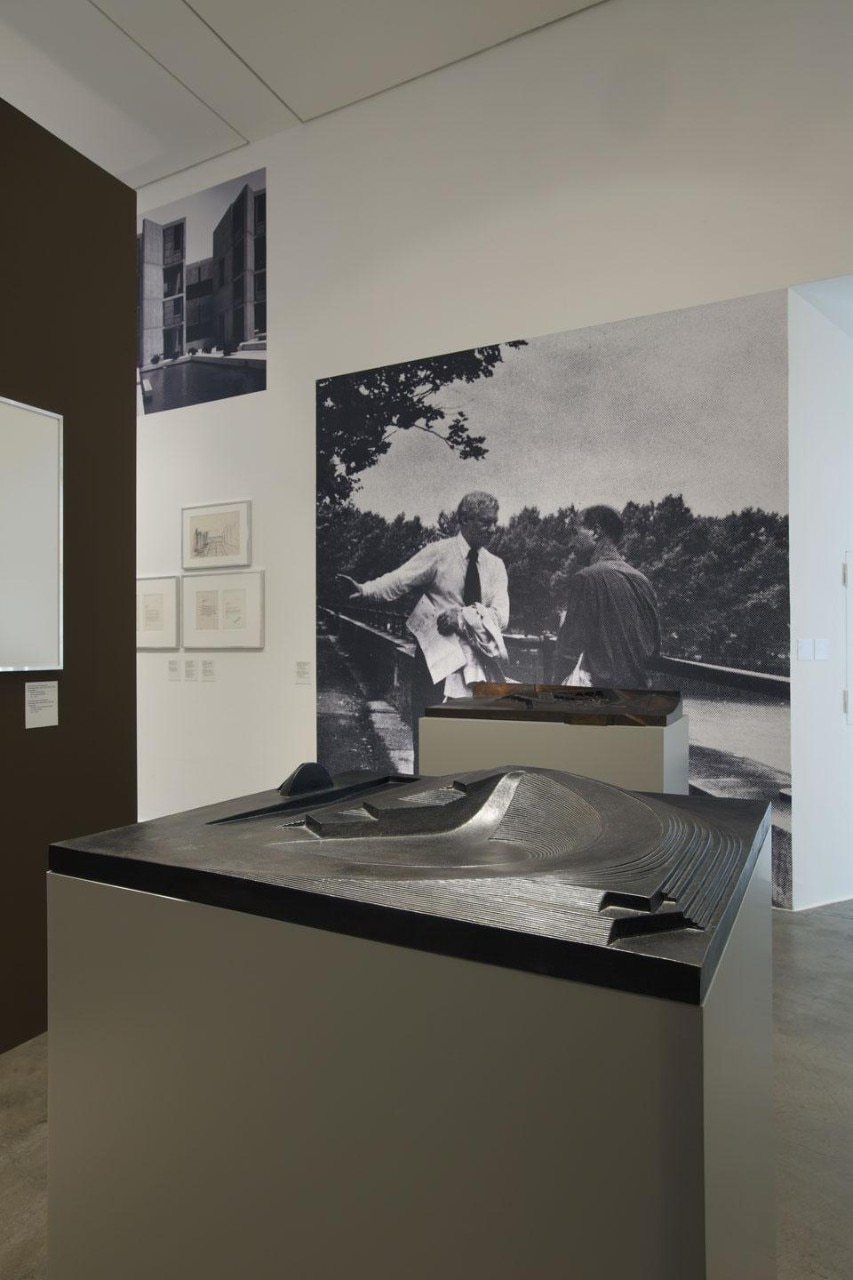
The exhibition also includes chapters on his private houses, his relation to landscape and his community buildings — all of which are so rich in information they could have each formed an exhibition of their own
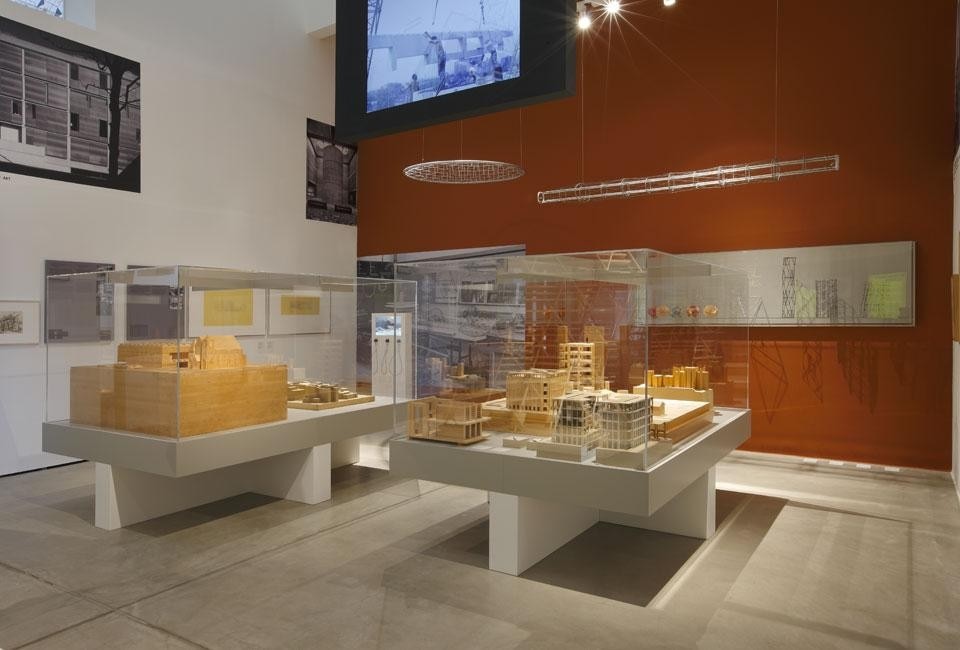
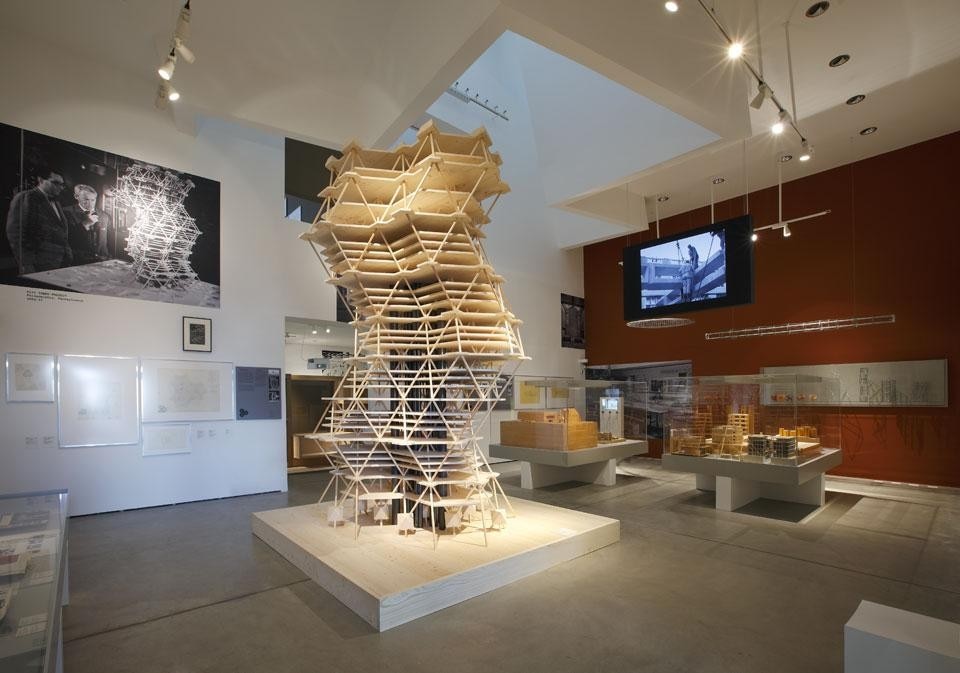
Louis Kahn: the power of architecture
Vitra Design Museum
Weil am Rhein, Germany
